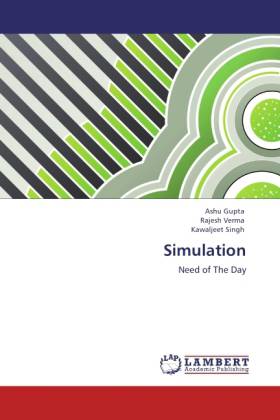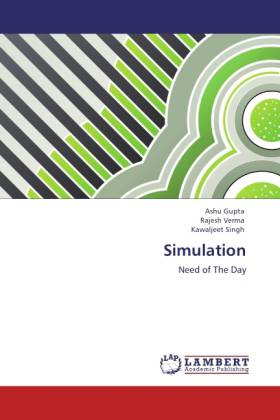
- Afhalen na 1 uur in een winkel met voorraad
- Gratis thuislevering in België vanaf € 30
- Ruim aanbod met 7 miljoen producten
- Afhalen na 1 uur in een winkel met voorraad
- Gratis thuislevering in België vanaf € 30
- Ruim aanbod met 7 miljoen producten
Zoeken
€ 77,95
+ 155 punten
Omschrijving
Modelling and simulation are emerging as key technologies to support manufacturing in the 21st century as simulation is a powerful tool for allowing designers to imagine new systems and enabling them to quantify and observe its behaviour. According to Hammer and Champy (1993), any change brings substantial risk as it is usually difficult to predict the outcome of changes before they are put into practice, and it is evident that the failure rates of Business Process Reengineering projects is over 50%. Successful implementation of BPR is not possible without the use of Business Process Modelling (BPM) and that too through simulation as it seems reasonable to claim that simulation modelling could offer a great potential in modelling and analyzing business processes, and therefore reduce the risk associated with business process change. We had found that business students wanted to use simulation to analyze stochastic financial problems as well as discrete event models. This book is an attempt to serve these students and others with similar interests.Thus, it is directed at a broad range of students, including IE and OR students who wish to adopt the practical approach we take.
Specificaties
Betrokkenen
- Auteur(s):
- Uitgeverij:
Inhoud
- Aantal bladzijden:
- 304
- Taal:
- Engels
Eigenschappen
- Productcode (EAN):
- 9783845433929
- Verschijningsdatum:
- 12/08/2011
- Uitvoering:
- Paperback
- Formaat:
- Trade paperback (VS)
- Afmetingen:
- 152 mm x 229 mm
- Gewicht:
- 449 g

Alleen bij Standaard Boekhandel
+ 155 punten op je klantenkaart van Standaard Boekhandel
Beoordelingen
We publiceren alleen reviews die voldoen aan de voorwaarden voor reviews. Bekijk onze voorwaarden voor reviews.











